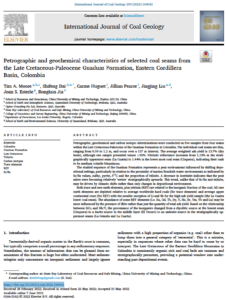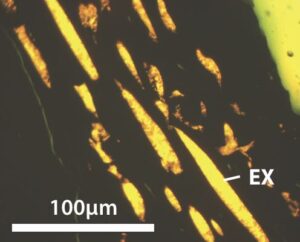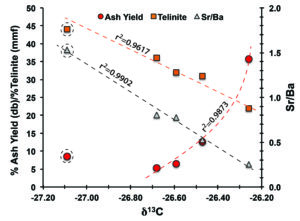Colombia is an utterly magical place and the geology is awe-inspiring. If you haven’t visited yet, make a  booking. Today.
booking. Today.
Especially if you are a geologist.
We’ve recently published a paper* on the Late Cretaceous (possibly Paleocene) Guaduas Formation in the Eastern Cordillera Basin. The formation is consistently organic–rich and coal beds are common and stratigraphically persistent, providing a potential window into understanding past depositional events.
If you want to read see the paper its here: https://doi.org/10.1016/j.coal.2022.104042
Once again, we show just how much can be learned by looking at the organic material in a geological cycle.
Myself and my co-authors Prof. Shifeng Dai (China University of Mining and Technology, China), Carme Huguet and Jillian Pearse (both from the Department of Geosciences, Los Andes University, Bogotá, Colombia), Prof Joan Esterle (University of Queensland, Australia) and Jingjing Liu and Rongkun Jia (both from the China University of Mining and Technology, Xuzhou) worked on a limited suite of samples and characterized them using trace and rare earth element analysis, organic analysis on etched coal samples and organic stable carbon isotopes.The paper shows that using a combination of analyses and trace element ratios, proximity to more saline environments can be evaluated. Plus, telinite (preserved plant tissue) has a very strong association with stable carbon isotopes and Sr/Ba ratio. With more work, the importance of these variations will no doubt become more apparent.
Highlights of the paper are:
- Low inertinite at the top seam may indicate wetter conditions and/or less fire than the lower seams
- Strong correlation between Sr/Ba, %telinite and δ13C may be related to the relative proximity to marine/brackish water environments
- Both trace elements and REY are depleted relative to world averages but vary directly with ash yield
- The upper most seam studied (La Cuarta) demarcates a change from mostly terrestrially influenced to more marine/brackish water influenced environments
- The ultimate source of the inorganics changed from rhyolitic to dacite to andesite from the bottom most coal to the top most in this study.
* Moore, T.A., Dai, S., Huguet, C., Pearse, J., Liu, J., Esterle, J.S., Jia, R., 2022. Petrographic and geochemical characteristics of selected coal seams from the Late Cretaceous-Paleocene Guaduas Formation, Eastern Cordillera Basin, Colombia. International Journal of Coal Geology 259, 16 pp., https://doi.org/10.1016/j.coal.2022.104042
.





Comments are closed.